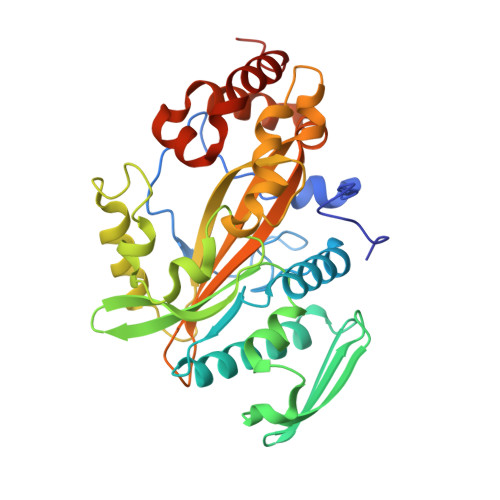An oxidative N-demethylase reveals PAS transition from ubiquitous sensor to enzyme.
Ortmayer, M., Lafite, P., Menon, B.R., Tralau, T., Fisher, K., Denkhaus, L., Scrutton, N.S., Rigby, S.E., Munro, A.W., Hay, S., Leys, D.(2016) Nature 539: 593-597
- PubMed: 27851736
- DOI: https://doi.org/10.1038/nature20159
- Primary Citation of Related Structures:
5LTE, 5LTH, 5LTI - PubMed Abstract:
The universal Per-ARNT-Sim (PAS) domain functions as a signal transduction module involved in sensing diverse stimuli such as small molecules, light, redox state and gases. The highly evolvable PAS scaffold can bind a broad range of ligands, including haem, flavins and metal ions. However, although these ligands can support catalytic activity, to our knowledge no enzymatic PAS domain has been found. Here we report characterization of the first PAS enzyme: a haem-dependent oxidative N-demethylase. Unrelated to other amine oxidases, this enzyme contains haem, flavin mononucleotide, 2Fe-2S and tetrahydrofolic acid cofactors, and specifically catalyses the NADPH-dependent oxidation of dimethylamine. The structure of the α subunit reveals that it is a haem-binding PAS domain, similar in structure to PAS gas sensors. The dimethylamine substrate forms part of a highly polarized oxygen-binding site, and directly assists oxygen activation by acting as both an electron and proton donor. Our data reveal that the ubiquitous PAS domain can make the transition from sensor to enzyme, suggesting that the PAS scaffold can support the development of artificial enzymes.
- Manchester Institute of Biotechnology, School of Chemistry, 131 Princess Street, University of Manchester, Manchester M1 7DN, UK.
Organizational Affiliation:




















